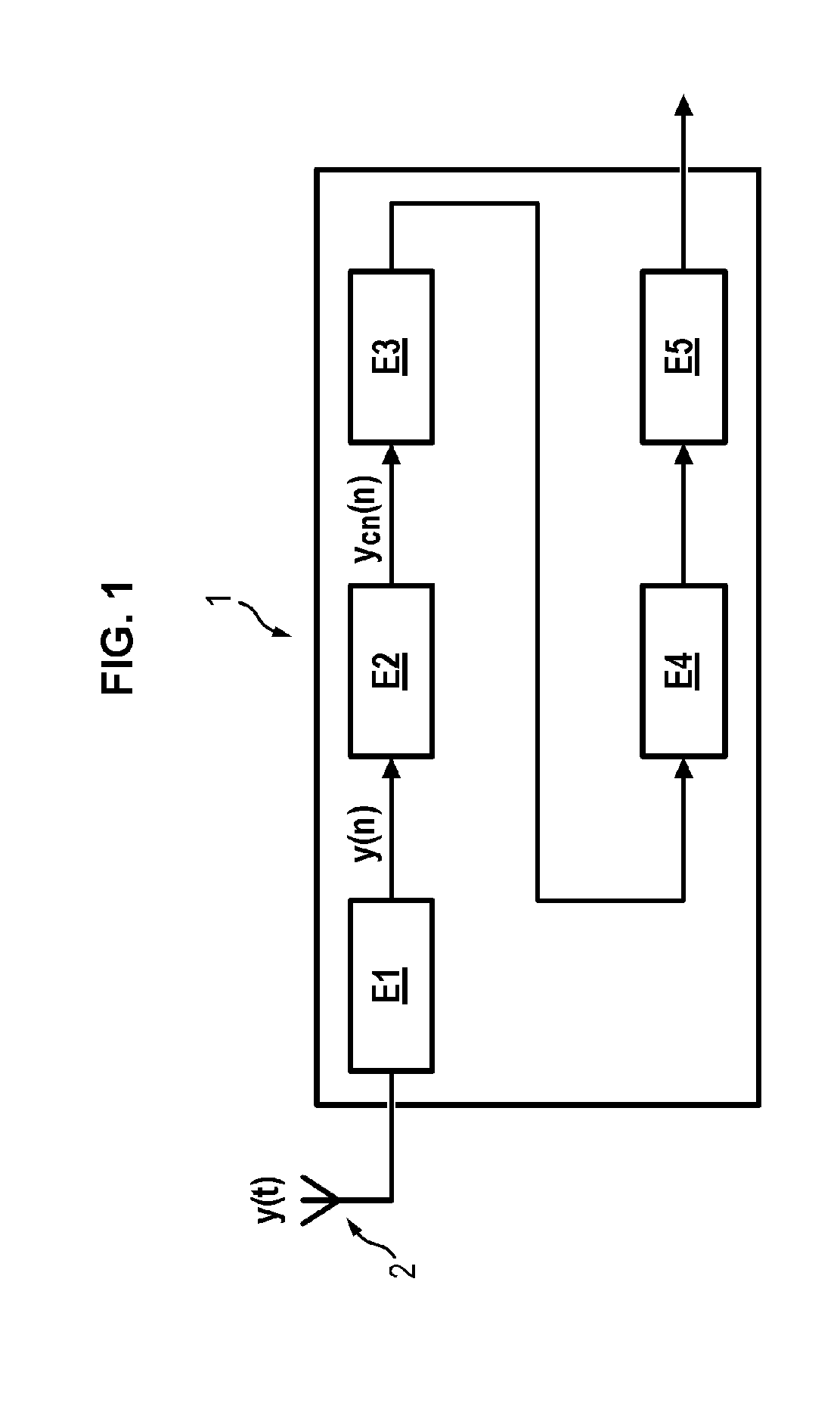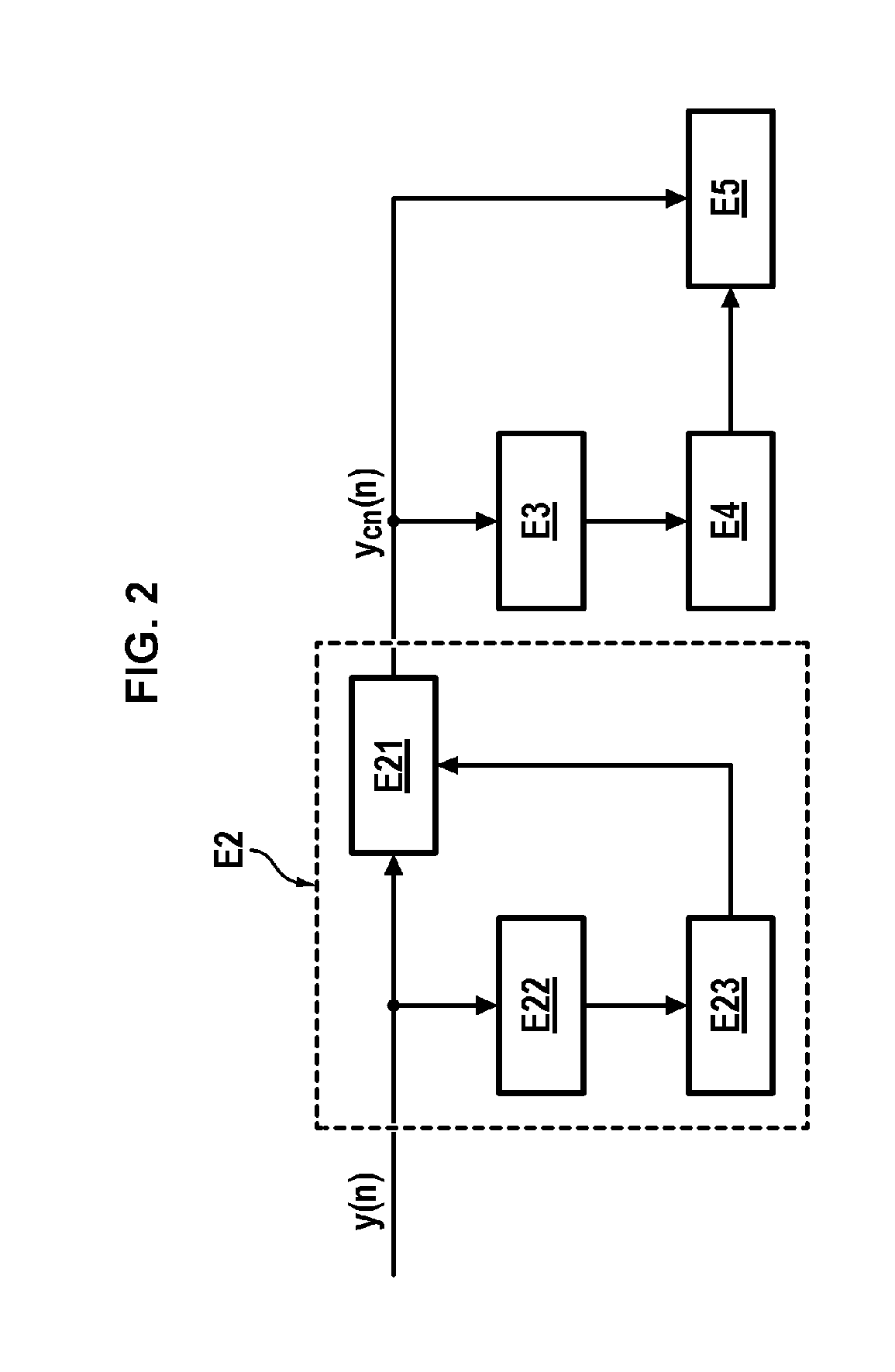Method For Estimating Parameters Of Signals Contained In A Frequency Band
a frequency band and parameter estimation technology, applied in the field of telecommunications, can solve the problems of high error rate of classic architecture terminals, ineffectiveness, and inability to use,
- Summary
- Abstract
- Description
- Claims
- Application Information
AI Technical Summary
Problems solved by technology
Method used
Image
Examples
Embodiment Construction
[0047]In terms of a method of estimation of parameters constituting one or more signals partially or totally superposed in frequency in a given band, described in relation to FIGS. 1 and 2, a signal y(t) is received ED by a radio receiver 1 comprising one or more antennae 2.
[0048]The composite signal y(t) received is a single signal or a mixture of several signals contained in a frequency band and expressed temporally as follows:
y(t)=∑u=1Nuau(t)·ej·(2π·fu(t)·t+φu)·∑k=1Nsu(k)·hu(t-kRu(t)-τu)+ω(t)
With
[0049]ω: the additive Gaussian white noise;[0050]Nu: the number of signals contained in the considered frequency band;[0051]au: the amplitude of the signal u;[0052]fu: the carrier frequency of the signal u;[0053]ϕu: the phase at the origin of the signal u;[0054]su: the symbols sent by the sender u;[0055]Ru: the symbol rhythms of the sender u;[0056]τu: the initial delay of the signal u;[0057]hu: the shaping filter of the signal u.
[0058]The aim of the method is to estimate the parameters co...
PUM
 Login to View More
Login to View More Abstract
Description
Claims
Application Information
 Login to View More
Login to View More - R&D
- Intellectual Property
- Life Sciences
- Materials
- Tech Scout
- Unparalleled Data Quality
- Higher Quality Content
- 60% Fewer Hallucinations
Browse by: Latest US Patents, China's latest patents, Technical Efficacy Thesaurus, Application Domain, Technology Topic, Popular Technical Reports.
© 2025 PatSnap. All rights reserved.Legal|Privacy policy|Modern Slavery Act Transparency Statement|Sitemap|About US| Contact US: help@patsnap.com


